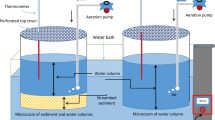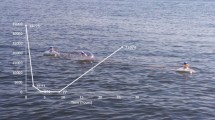Abstract
The knowledge of enteric bacteria survival kinetic is very important for environmental scientists. Enteric bacteria andspecifically the fecal indicator bacteria are typically used to measure the sanitary quality of water for recreational, industrial, agricultural and water supply purposes. They are released into the environment with feces, and are then exposedto a variety of environmental conditions that eventually causetheir death. In general, it is believed that the fecal indicatorcannot grow in natural environments, since they are adapted to live in the gastrointestinal tract. Studies have shown that fecalindicator bacteria survive from a few hours up to several daysin surface water, but may survive for days or months in lake-sediments, where they may be protected from sunlight andpredators. We assume that pathogens similar to the fecal indicator bacteria die at the same rate as fecal indicator bacteria. Therefore, if we find relatively high numbers of fecalindicator bacteria in an environment, we assume that there is anincreased likelihood of pathogens being present as well. The kinetic of enteric bacteria survival in natural waters is affected by a large number of factors. One of them is the temperature. The aim of this contribution was the experimentalresearch of the survival kinetic of enteric bacteria applying a simple mathematical formula, which describes the survival kineticpredicting the decay phase at various temperatures. We aspire that the results will lead both to the solution of many engineering problems and to future research.
Similar content being viewed by others
References
Alton, L. V. and Rakhno, P. Kh.: 1979, 'Survival of oxidase-negative coliforms in seawater at nonoptimal temperatures', Soviet J. Marine Biol. 5, 64–67.
Barcina, I., Arana, I., Iriberri, J. and Egea, L.: 1986, 'Influence of light and natural microbiota of the Butron River on E. coli survival', Antonie van Leeuwenhoek 52, 555–566.
Darakas, E. and Hadjianghelou, A.: 1997, 'Mathematische Erfassung der Absterbekinetik der Escherichia coli in Gewässern', Wasser-Abwasser, gwf 138, 86–89.
Garcia-Lara, J., Menon, P., Servais, P. and Billen, G.: 1991, 'Mortality of fecal bacteria in seawater', Appl. Environ. Microbiol. 57, 885–888.
Grace, R. A.: 1978, Marine Outfall Systems, Planing, Design and Construction, Prentice-Hall, Inc.
Gurijala, K. R. and Alexander, M.: 1990, 'Explanation for the decline of bacteria introduced into lake water', Microbiol Ecol. 20, 231–244.
Hadjianghelou, A., Tassoula, E. and Hadjianghelou, H.: 1988, 'Wachstums und Absterbekinetik der Escherichia coli in Abwasser', Wasser-Abwasser, gwf 129, 632–638.
Hadjianghelou, H.: 1972, 'Beitrag zu der Untersuchung des Verfalls der Escherichia coli im Meerwasser wahrend der ersten 24 Stunden', Gesundheits-Ingenieur 93, 330–332.
Kjellberg, S., Hermansson, M. and Marden, P.: 1987, 'The transient phases between growth and nongrowth of heterotrophic bacteria, with emphasis on the marine environment', Ann. Rev. Microbiol. 41, 25–49.
Lantrip, B. M.: 1983, 'The Decay of Enteric Bacteria in an Estuary', Ph.D. Dissertation, School of Hygiene and Public Health. The Johns Hopkins University, Baltimore, Maryland.
Mancini, J. L.: 1978, 'Numerical estimates of coliform mortality rates under various conditions', JWPCF 50, 2477–2488.
Mitchell, R. and Chamberlin, C.: 1978, 'Factors Affecting the Survival of Indicator Organisms in the Aquatic Environment', in G. Berg (ed.), Indicators of Enteric Contamination in Natural Waters, Ann Arbor Press, Ann Arbor, Michigan.
Munro, P. M., Gauthier, M. J. and Laumond, F. M.: 1987, 'Changes in Escherichia coli cells starved in seawater or grown in seawater-wastewater mixtures', Appl. Environ. Microbiol. 53, 1476–1481.
Orlob, G. T.: 1956, 'Viability of sewage bacteria in seawater', Sewage Industr.Wastes 28, 1147–1167.
Rhodes, M. W. and Kator, H. I.: 1988, 'Survival of Escherichia coli and Salmonella spp. in estuarine environments', Appl. Environ. Microbiol. 54, 2902–2907.
Tasoula, E.: 1998, 'Temperature and substrate interaction in the kinetics of E. coli survival', Int. J. Environ. Stud. 55, 67–76.
Won, W. D. and Ross, H.: 1973, 'Persistence of virus and bacteria in seawater', J. Environ. Enginr. Div. (ASCE) 99, 205–211.
Author information
Authors and Affiliations
Rights and permissions
About this article
Cite this article
Darakas, E. E. Coli Kinetics - Effect of Temperature on the Maintenance and Respectively the Decay Phase. Environ Monit Assess 78, 101–110 (2002). https://doi.org/10.1023/A:1016313520396
Issue Date:
DOI: https://doi.org/10.1023/A:1016313520396




